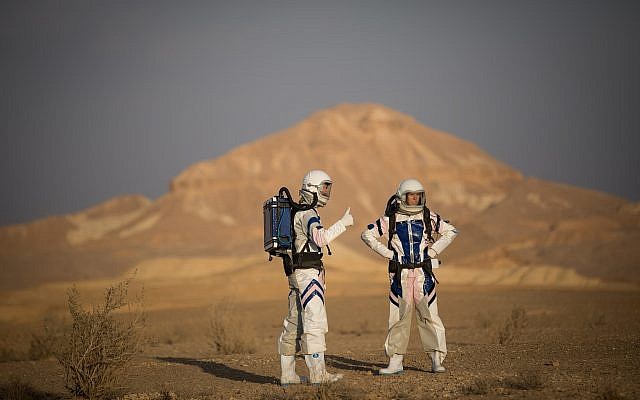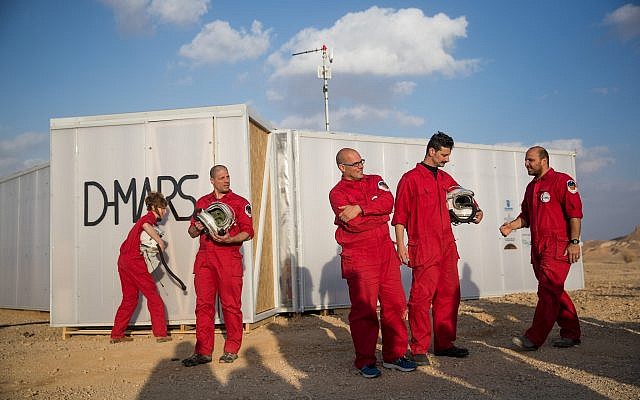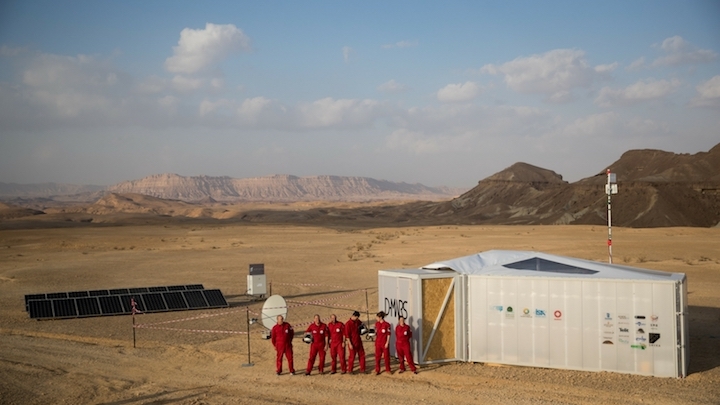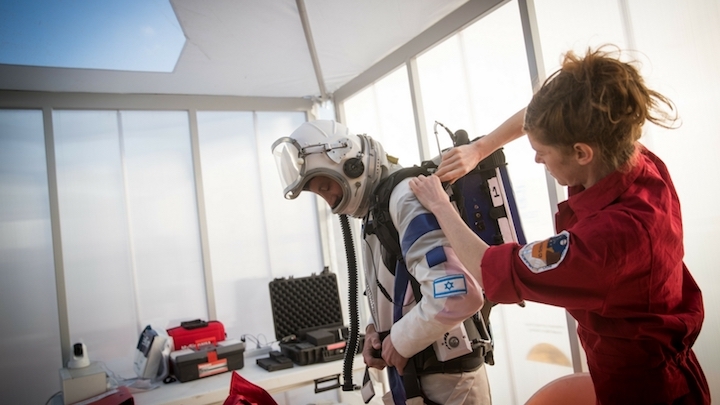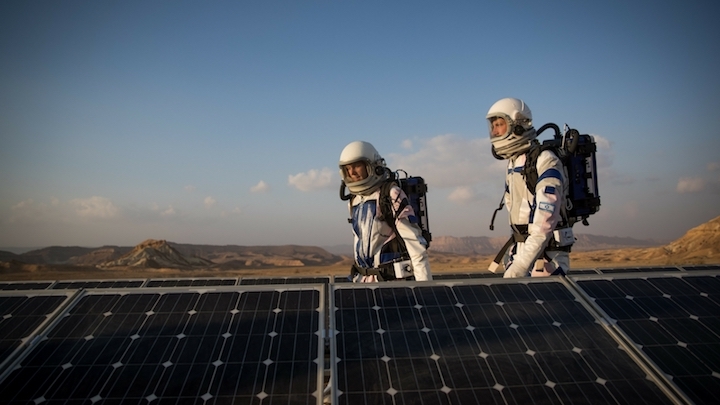Deep in a forbidding, cratered and rock-strewn wilderness, six Israeli pioneers tried their hand this month at life on Mars.
On Sunday, they took off their helmets and sucked in the highly breathable air of Israel’s Negev desert, where they had spent the last four days simulating a mission to the Red Planet.
The mission was the first of several planned “expeditions” to Mars, held in the D-MARS (Desert Mars Analog Ramon Station) facility near the town of Mitzpeh Ramon, in the rugged Ramon crater.
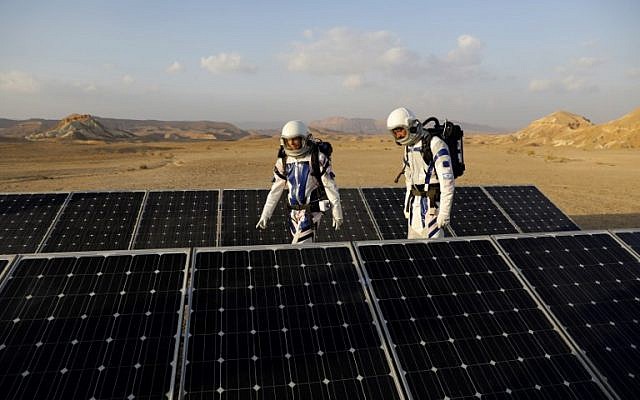
The experiment, one of several analog Mars missions around the world, was meant to help plan for a future manned mission to the Red Planet as well as boost Israel’s mostly nascent space program, which currently consists of tech know-how, a number of satellites, and a lot of dreams.
The initiative is funded by the Israeli Space Agency and the Israeli Ministry of Science, Technology and Space.
“D-Mars is half about the research, and the other half is about the outreach. A major part of this project is getting public interest and getting students interested in space,” participant Guy Ron told the Reuters news agency.
During the simulation, the so-called “Ramonauts” tested the habitat design, the spacesuits, the communication infrastructure and workflows with the Mission Support Center, according to the project’s organizers.
In addition, they carried out five scientific experiments, including looking for cosmic radiation, a 3-D printing project and a psychological test.
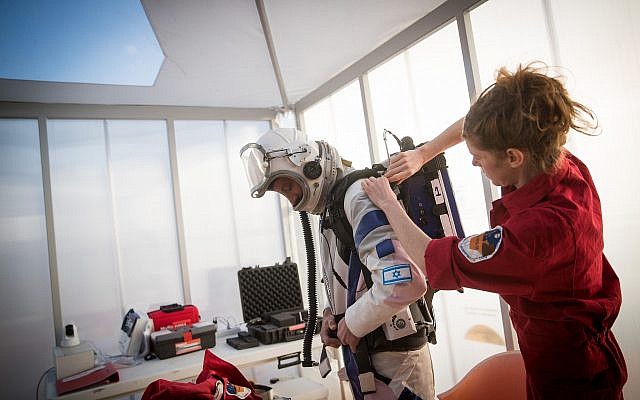
While in the simulation, the Ramonauts ate food from capsules, lived in confined quarters, and wore spacesuits whenever they had to leave their pod to conduct experiments.
The location in the Ramon crater was meant to simulate the Red Planet’s terrain, with “many similarities to the actual Martian environment in terms of geology, aridity and isolation,” according to organizers.
Wadi Rum, some 100 kilometers away in Jordan, was used to play Mars in the movie “The Martian,” and other Hollywood films, and is now marketed to tourists seeking a “Martian experience.”
Dr. Hillel Rubinstein, the field commander and head of the Israeli mission, described D-Mars as “a special and exciting experience, an amazing team,” adding that “even adults can continue to dream of distant stars.”
A tool, but not a panacea
But some say that dream may soon be a reality.
While a manned mission to Mars remains in the realm of science fiction, the recent launch of Space-X’s Falcon Heavy rocket has raised expectations. The launch “puts us in a completely different realm of what we can put into deep space, what we can send to Mars,” said Kartik Kumar, an analog astronaut taking part in a similar Mars simulation in the Omani desert.

Public and private ventures are racing toward Mars — both former US president Barack Obama and SpaceX founder Elon Musk declared that humans would walk on the Red Planet in a few decades.
New challengers like China are joining the United States and Russia in space with an ambitious, if vague, Mars program.
Aerospace corporations like Blue Origin have published schematics of future bases, ships and suits.

Faux space stations have been built underwater off the coast of Florida, on frigid dark deserts of Antarctica, and in volcanic craters in Hawaii, according to “Packing For Mars,” a favorite book among many Mars scientists, written by Mary Roach.
“Terrestrial analogs are a tool in the toolkit of space exploration, but they are not a panacea,” said Scott Hubbard, known as “Mars czar” back when he led the US space agency’s Mars program. Some simulations have helped developed cameras, rovers, suits and closed-loop life-support systems, he said.
NASA used the Mojave Desert to test rovers destined for the Red Planet but they also discovered much about how humans can adapt.
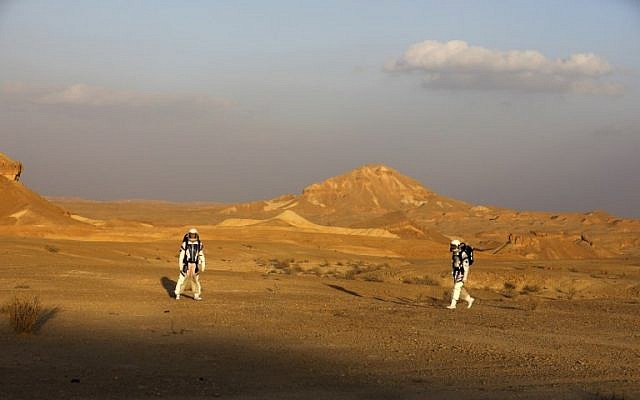
“Human’s adaptability in an unstructured environment is still far, far better than any robot we can send to space,” Hubbard said, adding that people, not just robots, are the key to exploring Mars.
The European Space Agency’s list of “planetary analogues” includes projects in Chile, Peru, South Africa, Namibia, Morocco, Italy, Spain, Canada, Antarctica, Russia, China, Australia, India, Germany, Norway, Iceland, and nine US states.
However, there remain so many unknowns that simulations “are not in any way a replacement for being there,” Hubbard said.

